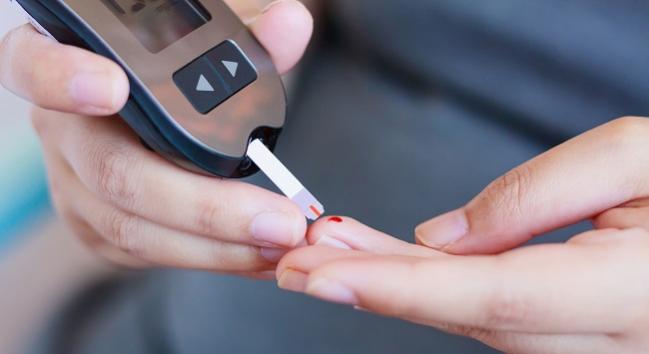BIO-RESORT: Impaired Glucose Metabolism Linked With Worse Clinical Outcomes After PCI
Despite modern DES, those with diabetes and prediabetes fared a lot worse after PCI than those with normal glucose metabolism.

Individuals with “silent” diabetes, as well those with prediabetes, have a higher rate of target vessel failure following implantation with contemporary drug-eluting stents when compared with individuals with normal glucose metabolism, according to the results of a new analysis.
Among those with silent diabetes—individuals with previously undiagnosed diabetes prior to the coronary procedure—the rate of target-vessel MI was 12.1% at 1 year, which was significantly higher than the 1.8% observed in individuals with normal glucose metabolism. The risk of target-vessel MI was primarily driven by events occurring within the first 24 hours after the procedure.
“To a very great extent, this is absolutely the case,” lead investigator Clemens von Birgelen, MD, PhD (Thoraxcentrum Twente, Amsterdam, the Netherlands), said here at EuroPCR 2017, where he presented the results. “Periprocedural MI is the driving force behind the difference that we see. From a biological point of view, I think it’s the vulnerability of the vessel in the diabetic patient, or the patient with some early stage of diabetes.”
These diabetic and prediabetic patients might have more diffuse and brittle coronary plaque, which could lead to embolization during the PCI procedure, he said. To TCTMD, von Birgelen noted that in the modern era, contemporary drug-eluting stents are associated with very low event rates and that given these higher risks in individuals with undiagnosed diabetes and prediabetes, physicians may consider screening all patients undergoing PCI.
This may “help identify patients at an increased event risk and improve their medical therapy,” said von Birgelen.
BIO-RESORT Diabetes Substudy
In the study, known as BIO-RESORT, patients were treated with the sirolimus-eluting Orsiro stent with a biodegradable polymer (Biotronik), the Synergy everolimus-eluting stent with a bioresorbable polymer (Boston Scientific), and the Resolute Integrity zotarolimus-eluting stent (Medtronic). In the main study, which was presented at TCT 2016, treating patients with either of the biodegradable-polymer devices resulted in 1-year results no worse than those seen with the zotarolimus-eluting durable-polymer stent.
Speaking with the media, von Birgelen said the cardiovascular risk associated with hyperglycemia is a continuum without any clear threshold effect. Diabetic patients, he said, have a significantly higher risk of recurrent coronary events after PCI, even among those who receive the latest-generation drug-eluting stents. That risk extends beyond the threshold currently used to define diabetes to include those with prediabetes.
In the BIO-RESORT diabetes substudy, the researchers included 988 “nondiabetic” individuals who agreed to undergo oral glucose tolerance testing (OGTT) and an assessment of HbA1c levels 6 weeks after PCI. In the analysis, prediabetes was defined as fasting plasma glucose (FPG) levels less than 7.0 mmol/L and a 2-hour post-load glucose level ranging from 7.8 to 11.0 mmol/L. Silent diabetes was defined as FPG ≥ 7.0 mmol/L or a 2-hour post-load glucose level ≥ 11.0 mmol/L. Overall, 7% of screened patients had undiagnosed diabetes and 13% had prediabetes. If HbA1c and FPG levels were used to make a diagnosis, silent diabetes was present in 3% of patients, whereas 22% had prediabetes.
Abnormal glucose metabolism was found in approximately one-third of the “nondiabetic” all-comer patients, said von Birgelen. “If you find this amount of abnormal glucose metabolism in the Netherlands, you might expect to find higher rates elsewhere,” he said, noting that the syndrome tends to be lower in his country than in other European countries.
Based on OGTT, the primary endpoint of target vessel failure—defined as cardiac death, target-vessel MI, or TVR—occurred in 13.2% of subjects with silent diabetes, 6.1% of those with prediabetes, and 2.8% of those with normal glucose metabolism (P < 0.001 for all comparisons). Similar results were observed when investigators used HbA1c levels and FPG to define abnormal glucose metabolism. As noted, the increased risk of target vessel failure was driven by an increased risk of target-vessel MI among individuals with undiagnosed diabetes regardless of the definition used to define silent diabetes and prediabetes.
Given the high risk of recurrent events among diabetic and prediabetic patients treated with these new-generation stents, physicians may need to look to other frontiers. One option, said von Birgelen, would be aggressive lipid-lowering among patients with abnormal glucose metabolism scheduled for PCI.
“There are data to suggest that with aggressive lipid-lowering you might reduce the risk of periprocedural MI,” said von Birgelen.
Michael O’Riordan is the Managing Editor for TCTMD. He completed his undergraduate degrees at Queen’s University in Kingston, ON, and…
Read Full BioSources
Von Birgelen C, on behalf of the BIO-RESORT investigators. BIO-RESORT: impact of silent diabetes on clinical outcome in all-comers treated with contemporary DES. Presented at: EuroPCR 2017. May 18, 2017. Paris, France.
Disclosures
- Von Birgelen reports receiving research grants/support from AstraZeneca, Biotronik, Boston Scientific, and Medtronic.


Comments